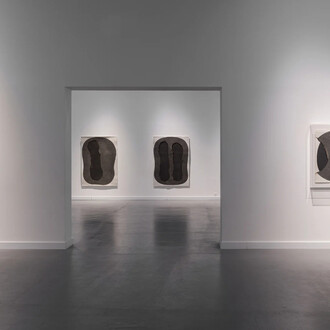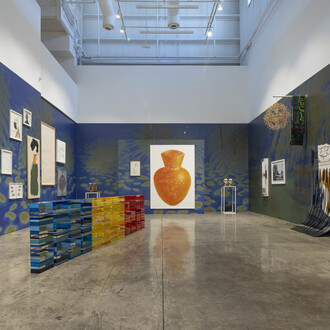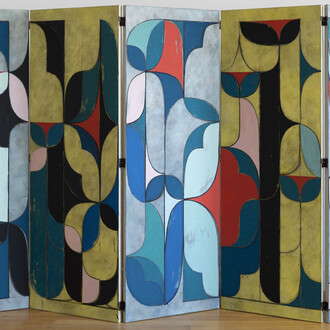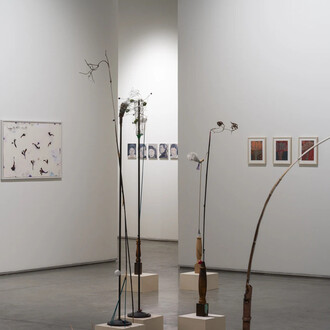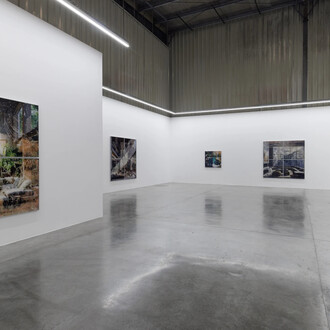Ayyam Gallery Dubai is pleased to present In the Footsteps of Cai Lun: Selected Works on Paper, a collective exhibition that highlights painters who also use drawing and printmaking as primary media.
Invoking the first-century Chinese official who revolutionised papermaking, the exhibition brings together diverse examples that form an abbreviated history of contemporary works on paper in the Middle East. The drawings and mixed-media works of seminal artists Leila Nseir, Samia Halaby, and the late Moustafa Fathi demonstrate how the use of paper in art has evolved in the Middle East over the last five decades. Pastel prints by Leila Nseir from the 1980s and 90s, for example, reveal how the influential Syrian artist has often used the medium as a means of describing the intimate dynamics of families, particularly motherhood—a subject that has been central to her artistic practice for decades. Here, the coarse marks of pastels accentuate the slight texture of the paper, adding to the laden quality of her imagery.
Moustafa Fathi’s mixed-media paintings on paper, although applied with a brush, are reminiscent of a monoprint technique that he based on research of textiles in his native Syria. Patterns are repeated over a solid wash of colour that Fathi painted on the surface of each work in a manner similar to the dyed canvases that he used for his large, imposing paintings. The abstract shapes of his works reference various natural or social phenomena, depicting the world as a series of interactions.
Recent works by Athier Mousawi, Nihad Al-Turk, Mohammad Bozorgi, and Tammam Azzam exemplify how paper continues to be used as a surface that can mirror the implied materiality of an image. Azzam’s black and white monoprints resemble photographic negatives, transforming his familiar subject matter into sinister imagery that connotes an alarming sense of foreboding, as they were created shortly before the start of the Syrian conflict.
Rounding out the exhibition is a pair of drawings by pioneering conceptual artist Faisal Samra, whose vast body of work on paper dates back to the 1970s. Drawn from his 2012 Dancer series—in which movement is recorded with expressive lines and delicate charcoal smudges detail the bodies of figures—the frenzied nature of these images is complemented by colour gradations that appear across yellowed paper, providing evidence of the passage of time.





